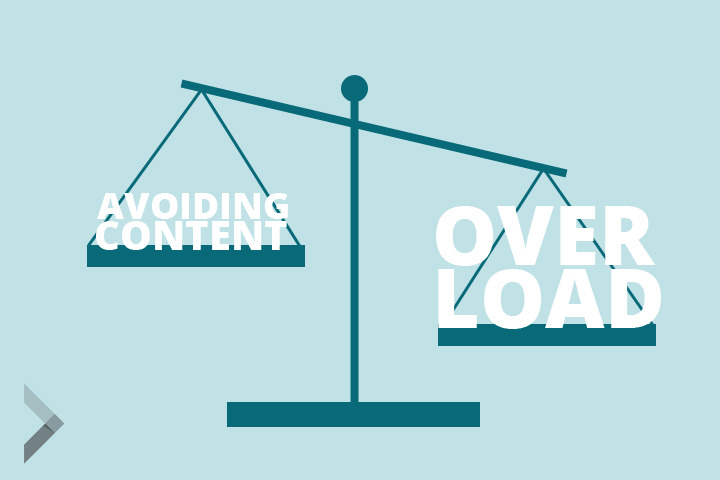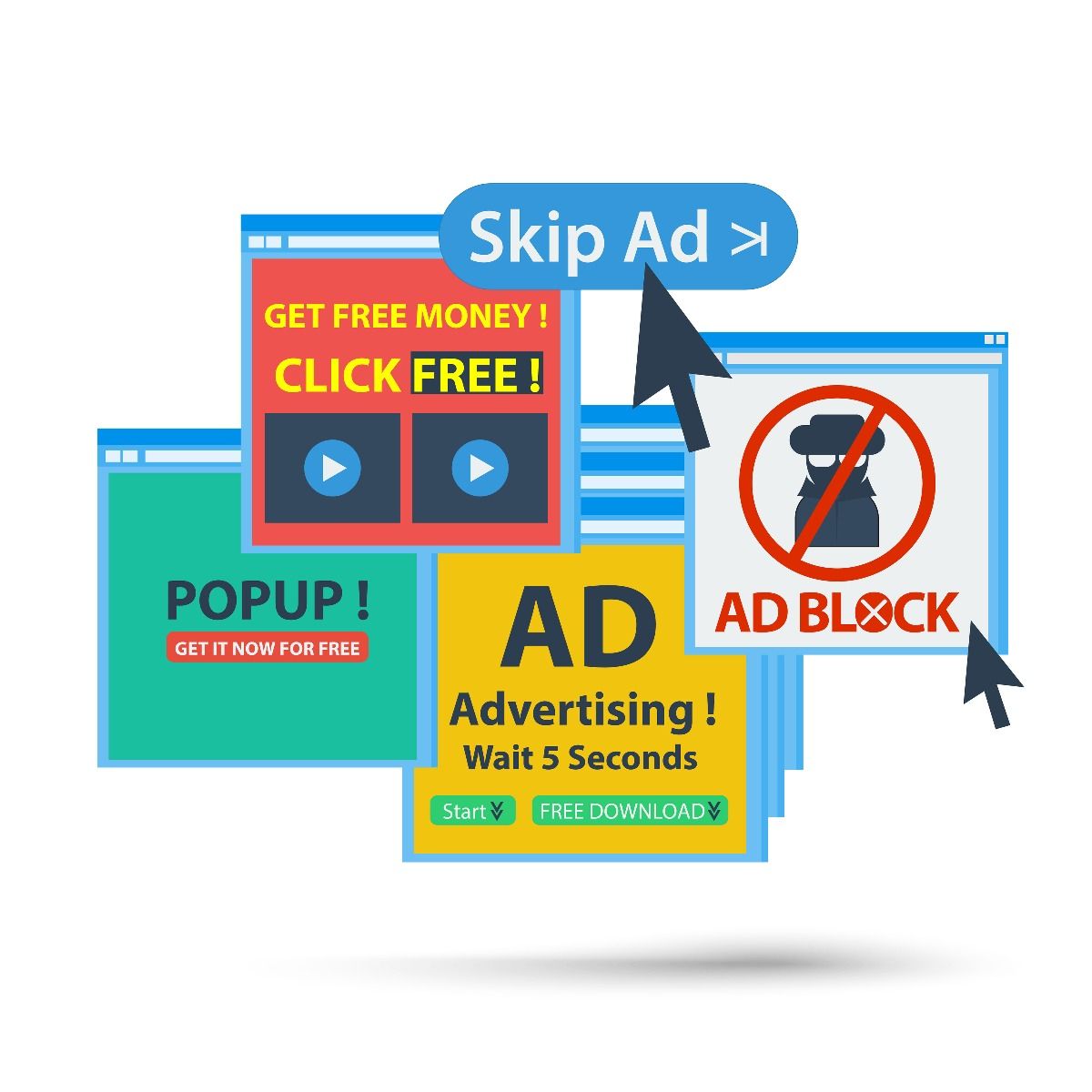Along with the explosion of new media channels and marketing technologies, and especially the change in consumer awareness and behavior in recent times, the content marketing trend in 2025 will also have many new changes. By analyzing the effectiveness indicators on media channels, combined with the content consumption trends of consumers, the following article will point out 5 factors that will reshape the content strategy of brands in 2025.
Content Marketing Trends 2025: Marketers should not follow social media algorithms!
Users are tired of the huge amount of content
The strong growth from the number of social media channels, Content Creators to the number of brands has led to a huge amount of marketing content reaching consumers every day. On the other hand, the strong development of AI content creation tools is helping marketers create content faster with larger volumes, but the level of content creativity is not high, creating a lot of similar content.
Faced with such a large and similar amount of content, consumers are gradually feeling tired of the content on the internet, especially the content created on social media platforms . Whether it is content from brands, content in collaboration with creators or content from AI, it is making users feel quite tired and becoming difficult to consume.
Some of the figures below better reflect this trend:
- Time spent on social media is on the decline: Statistics show that global consumers’ daily social media usage time is down 2.7% or about 4 minutes over the past year, now at 2 hours and 23 minutes per day.
- In terms of the number of users per platform: Facebook is still the largest social network in terms of overall users, Instagram is currently second, YouTube is third and TikTok is fourth. But the position of this platform may be shaken in the near future, when the behavioral trends of young users become more complex. Particularly for Gen Z, it seems that Instagram has more influence than Facebook with a large number of young users. On the other hand, TikTok is also showing great attraction to this group of users.
- In terms of popularity and usage time: In terms of popularity, Instagram is the leading social network globally, WhatsApp is second, Facebook is third, WeChat is fourth and TikTok is fifth. In particular, in terms of time spent per day, TikTok is taking the lead with more than 1 hour per day, showing that this platform has the ability to greatly influence the trends and behaviors of young users.

Platforms are constantly changing, niche channels are on the rise
- TikTok with extremely sensitive algorithm: TikTok shows content to users based on their behavior instead of their followers. Therefore, this platform always brings users new, diverse content that matches their viewing trends. The platform’s algorithm also reacts very quickly, when it detects a change in users’ viewing behavior, TikTok only takes about 10 minutes to make similar viewing suggestions.
- Specialized social media channels have the potential to develop: Niche social media sites, dedicated to a certain group of needs such as LinkedIn – Recruitment and employment, channels mainly used for messaging such as Telegram, Discord, … or some other names such as Reddit, Threads, Tumblr, … are having many positive changes. Because, in the midst of the chaotic content storm from large platforms, small social networks bring them a more specialized space, where there are small but deeper communities, content that sticks to a certain topic.
On the other hand, social networks themselves also have many changes, constantly changing algorithms at a dizzying pace to optimize user experience on the platform. And from there, marketers’ efforts to follow the algorithm almost become meaningless, low-quality content, even if guaranteed by the algorithm, will soon be eliminated by the platform’s own algorithm because it does not create a good experience for readers.
What should brands do?
The above changes show that the 2025 content marketing trend on social networks will mainly revolve around one issue: Quality. Instead of trying to optimize metrics to bypass algorithms, focus on providing high-value content to users, then your content will automatically be favored by the platform algorithm.
To do that, it is important to note that the content must ensure 3 no’s: no advertising, no promotions, no highlighting, features or product launches.
Instead, content on social media platforms should focus on educational content, guiding customers, shifting from product advertising to content that guides product application in real life. There is also entertainment content, bringing relaxing moments to customers or inspirational content, aiming at community values.
Content trends 2025: Paid content no longer guarantees accessibility
As analyzed, the core of social networking platforms is users, so they will always prioritize user experience above all. When there are too many spam ads, users will be annoyed and tend to leave the platform. Therefore, even if your channel runs a lot of ads but the content is too poor quality, the platform’s algorithm still tends to limit your content. The more advertising, while the content is not improved, the brand’s natural and paid reach becomes worse and worse.
Thus, the value of content is always the deciding factor in reaching and retaining users, even if you spend billions of dollars on paid advertising. Money is no longer a factor that guarantees brand reach.

What should brands do?
The above trend does not mean that paid advertising is no longer effective. Paid advertising is still a way to help your content reach customers more quickly and accurately. But to ensure optimal and long-term effectiveness of paid advertising, content quality is still the top priority.
Businesses can improve the quality of paid advertising content in a number of ways:
- Focus on interactive content, video content: In the sea of social media content, interactive content or live video content will help your brand attract viewers more easily. These formats give brands the opportunity to convey strong messages quickly and effectively. Especially short video formats, in recent times have shown strong appeal through the development of TikTok, YouTube Shorts and Instagram Reels.
- Collaboration with celebrities: Content featuring Influencers, KOLs, KOCs, etc. always has a special appeal to consumers. In particular, micro-influencers are becoming more and more attractive to consumers because of their authentic images and affordable prices.
- Sustainable elements in advertising content: Sincerity combined with community-oriented, sustainable development advertising content is an effective way for brands to reach the hearts of consumers, especially GenZ. Instead of showing off products, show the values that businesses can bring to the community, breaking the consumer’s defensive mentality towards conventional advertising.
- Develop new advertising channels: Instead of focusing only on Facebook or Google, explore new advertising trends with content that matches new consumer insights. For example, voice search and audio advertising are also a prominent trend recently. Or social commerce advertising (integrating direct purchase options into advertising) helps viewers shop conveniently when viewing ads on social channels.
Human connection is more important than ever in Content marketing trends in 2025
As AI becomes more powerful, the connection with people is more important than ever. Therefore, recently, the trend of content in advertisements with a “human” character, a genuine, close, and simple approach is becoming a new trend globally.
This content marketing trend can be clearly seen through some outstanding campaigns at Cannes Lions this year. Typically, the campaign of JCDecaux – using the image of a very ordinary old lady with almost the same number of followers to create an OOH advertising campaign to advertise its OOH service can help everything stand out. And the strange simplicity of the advertisement quickly made users excited, attracting more than 10,000 people to follow the anonymous old lady’s personal page. Or the campaign of Allgemeiner Frankfurter Zeitung to honor cultural celebrities, Oscar winners, sports heroes and Margot Friedlander – the last Holocaust survivor, who turned 102 this year.
What should brands do?
However, human connection here is not just about humane, touching stories, or ideas that impact emotions. Content can truly create genuine connections with people through the following ways:
- Educational content, providing valuable information for people’s lives: According to WARC, in the past 5 years, the rate of informational or educational strategies has surpassed emotional strategies. This valuable content attracts readers because of its practicality and value for their real lives.
- Use stories and real-life characters: Don’t just use influencers, use advertising images and real stories from ordinary users. They can be anyone, an office worker, a housewife, or a janitor, etc. The more approachable and real their images are, the higher the ability to attract viewers.

Content Marketing Trends 2025: Ethics Are Becoming More Important
In the content marketing trends of 2024, ethics has grown stronger than ever. The major awards at Cannes Lions this year also once again proved this trend:
- Dove is staying true to Real Beauty, dropping its ‘Bold Glamour’ filter on TikTok to protest the unrealistic and unattainable beauty standards people place on social media.
- AXA changed three little words in the terms and conditions of 3.5 million contracts in France to help women escape domestic violence by giving them time and a safe place to seek long-term security. They also provide emergency evacuation services in case of fire or flood, and domestic violence.
- KPN in the Netherlands highlights the consequences for girls’ lives when sharing personal images and content with others. From there, it warns people to protect personal privacy.
In Vietnam, ethical issues are also one of the favorite but also very sensitive topics for consumers in the current content marketing trend.

What should brands do?
Addressing ethical issues in marketing content not only attracts attention but also builds customer loyalty to the brand. However, when it comes to ethical issues in content marketing, brands need to keep the following factors in mind:
- Have a clear point of view, expressing the brand’s own stance on social, human or environmental issues,…
- The way of working is practical, transparent and relevant to the current issues of the community.
- Avoid too much brand PR in the campaign, focus on highlighting community-oriented values. Katinat’s case failed due to the lack of both of the above factors.
Break away from familiar brand images to create your own trends
The 2025 content marketing trend calls for boldly breaking familiar images, even brand symbols, as a way to attract consumers’ attention.
- Coca-Cola is ready to change its legendary logo to promote packaging recycling in its Recycle me campaign.
- Known as the most misspelled beer brand in the world, Heineken came up with a unique idea in its 150th anniversary campaign: Why not print those misspelled names on its beer bottles and cans?
- Or IKEA decided to display photos of IKEA products that had been damaged or destroyed by mischievous pets, accompanied by a humorous and light-hearted message: “Don’t worry: you can buy replacements without worrying about the price.”
What should brands do?
Of course, this will be a playground for large, long-standing businesses with a clear identity in the minds of customers. From there, choose some familiar features of the brand, or stories that customers often discuss about the brand, or consumer product usage habits, etc., which can all become creative, humorous advertising content, enhancing the authenticity and closeness of the advertising content.
AI is still a powerful “Assistant” to realize content ideas
The consequence of overusing AI is that it is becoming more and more difficult for consumers to consume marketing content. But that does not mean that AI should be eliminated from the content marketing trend in 2025. The rate of AI application in marketing is 74% in 2023 and will become an inevitable trend from now until 2030. Therefore, what brands need to do is change their perspective on using AI in content marketing in particular and marketing in general, applying it as an assistant for simple tasks and focusing on idea creation.
68% of marketers have seen AI take over routine tasks, freeing up space for more creative, strategic work. On the other hand, AI can also be used as a campaign tool, such as Orange’s “WoMen’s Football” campaign, where AI technology was used to process images, breaking down fans’ stereotypes about women’s football. Or Mastercard’s ‘Room for Everyone’ used purchase data to prove that having stores next to each other strengthens both businesses, breaking down the aversion of Polish businesspeople to having a Ukrainian store next door.

In general, use AI as a tool to automate simple daily tasks, helping you optimize your time for more creative work. Or use AI to realize creative ideas that people have thought of before.
Summarize
Above, MarketingAI has summarized the Content marketing trends that will be prominent in 2025, based on the latest changes in consumer behavior, as well as the development of new media channels and technologies. In general, future content marketing trends may change even more, but connection, authenticity and ethics will always be important factors that are emphasized in the content creation process, especially when AI is developing strongly.
Reference: LinkedIn
Comment Policy: We truly value your comments and appreciate the time you take to share your thoughts and feedback with us.
Note: Comments that are identified as spam or purely promotional will be removed.
To enhance your commenting experience, consider creating a Gravatar account. By adding an avatar and using the same e-mail here, your comments will feature a unique and recognizable avatar, making it easier for other members to identify you.
Please use a valid e-mail address so you can receive notifications when your comments receive replies.
